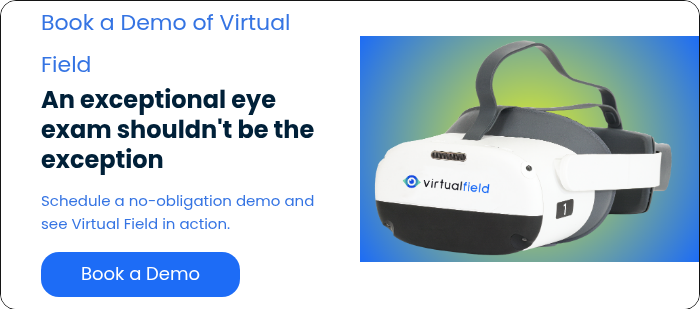Efficient billing and coding are essential for eye care professionals, enabling smooth practice operations and timely reimbursement. This guide is designed for ophthalmologists, optometrists, and their staff to confidently navigate CPT codes such as 92004, 92014, 92015, and related coding procedures. Understanding how to properly use these codes, along with knowing the levels of service — like how many levels of service CPT 92012 has — ensures accuracy, compliance, and optimized revenue.
Understanding Eye Care Coding Systems: CPT, ICD-10-CM, and HCPCS
Effective eye care billing revolves around three main coding systems:
- CPT Codes: Identify the services and procedures performed.
- ICD-10-CM Codes: Define the patient’s diagnosis.
- HCPCS Codes: Cover supplies, materials, and services not included in CPT.
Key CPT Codes for Eye Care: What You Need to Know About 92004, 92014, and 92015
CPT code 92004 and CPT code 92014 represent the cornerstone of comprehensive eye exams, differentiated by patient status:
- 92004 CPT code is used for a new patient comprehensive eye exam. It covers a detailed evaluation including history, visual acuity testing, refraction, and a thorough ocular health assessment.
- CPT code 92014 refers to a comprehensive eye exam for an established patient. Like 92004, it includes a detailed assessment of the visual system but assumes an existing patient-provider relationship.
Both 92004 and 92014 CPT codes represent Level 4 service in eye exams, indicating a high degree of complexity and thoroughness.
CPT code 92015 is the billing code used for refraction, the specialized process of determining the patient's exact eyeglass prescription during or after the eye exam. This code is frequently billed alongside 92004 or 92014 to capture the full scope of the vision assessment.
How Many Levels of Service Does CPT Code 92012 Have?
CPT code 92012 is used for an intermediate eye exam for established patients. It is less comprehensive than 92014 and focuses on a more limited evaluation of the visual system and ocular health.
Eye exam services typically fall into different levels reflecting complexity:
- Level 2: CPT codes 92002 (new patient) and 92012 (established patient) — intermediate exams.
- Level 4: CPT codes 92004 (new patient) and 92014 (established patient) — comprehensive exams.
Understanding how many levels of service CPT 92012 includes is essential to proper coding. CPT 92012 specifically refers to one level—the intermediate established patient exam, which differs from the comprehensive exam (92014).
Common Eye Care CPT Codes and Their Applications
- 92004 CPT code: New patient comprehensive exam — includes history, ocular exam, and evaluation of visual function.
- 92014 CPT code: Established patient comprehensive exam — similar to 92004 but for ongoing patients.
- 92015 CPT code: Refraction — often billed alongside eye exams to capture the prescription assessment.
- 92012 CPT code: Intermediate eye exam for established patients, less extensive than 92014.
Other specialty codes to consider:
- 92020: Gonioscopy (angle examination)
- 92060: Sensorimotor examination for strabismus
Best Practices for Billing and Coding with CPT 92004, 92014, and 92015
To maximize reimbursement and avoid denials:
- Always pair CPT code 92015 refraction billing with an eye exam CPT code like 92004 or 92014 if a refraction was performed.
- Use modifier -25 when billing a significant, separately identifiable service alongside a comprehensive exam. For example, if a cataract surgery evaluation (66984) is done during a visit coded as 92014, modifier -25 clarifies the billing.
- Ensure documentation supports the selected CPT code level — comprehensive exams (92004, 92014) require more detailed documentation than intermediate exams (92012).
Accurate billing starts with accurate documentation.
Many practices reduce denials by ensuring diagnostic testing, like visual fields, is consistently performed, documented, and retrievable when audits occur.
See how Virtual Field helps practices standardize visual field documentation.
Claim Submission and Compliance Tips for CPT 92004, 92014, and 92015
Accurate claim submission is critical. Verify patient demographics, use specific ICD-10-CM codes for diagnoses, and clearly document all performed procedures. Electronic claims submission (ECS) streamlines processing and reduces errors. Regularly review claim denials to identify common coding mistakes related to CPT codes 92004, 92014, or 92015.
Stay updated with resources from the American Academy of Ophthalmology (AAO), American Optometric Association (AOA), and Centers for Medicare & Medicaid Services (CMS) for evolving guidelines.
Optimize Your Practice Revenue Cycle with Correct CPT Coding
Correct use of CPT codes 92004, 92014, 92015, and understanding intermediate exam codes like 92012 directly impacts your practice’s financial health. Investing in staff training on coding nuances and billing compliance will improve revenue cycles and allow you to focus on delivering quality patient care.
If you want a quick reference for your practice, keep these CPT codes and service levels top of mind:
Billing accuracy depends on complete clinical workflows.
Many eye care practices use visual field testing to support medical necessity, track disease progression, and strengthen documentation tied to CPT billing.
Learn how visual field testing supports compliant billing →
By mastering these key CPT codes and their appropriate use, your eye care practice can maintain compliance, optimize reimbursements, and continue providing exceptional care to every patient.
Optimize Billing, Documentation, and Patient Care—Together
Accurate CPT coding is only one part of a healthy revenue cycle. Diagnostic tools like visual field testing play a critical role in supporting medical necessity, improving audit readiness, and delivering better patient outcomes.
Virtual Field helps eye care practices modernize visual field testing with faster exams, standardized reports, and cloud-based documentation that supports compliant billing.
About Virtual Field
Virtual Field delivers an exceptional eye exam experience. Eye care professionals including ophthalmologists and optometrists examine patients faster, more efficiently, and more comfortably than ever before. Exams include Visual Field, 24-2, Kinetic Visual Field (Goldmann Perimetry), Ptosis, Esterman, Color Vision, Pupillometry, Extraocular Motility (EOM), and more.



